Fashion influencer Heather Anderson is in her 50s and thriving. The YouTuber is living her best life, and it looks incredible, not just for someone who is 50 but for anyone of any age. So how does she do it? “These five tips have definitely helped me tremendously stay fit,” she says. “But not only that, ladies, they've also helped me just feel mentally like the best version of myself. Now make sure you listen to tip number five because, in my mind, that is one of the most important tips that really has a lot to do with the size I am and how I stay so toned and fit.” Here’s what Anderson recommends.
#1: Attainable Exercise
Anderson highly recommends finding a workout routine that you can stick to long-term. “Tip number one that has really helped me is making sure that my exercise routine is attainable and actually easy to do because that is something I was struggling with is going to the gym in the mornings, actually leaving the house, and having time in my day,” she says. “I own my own business. I got a new puppy. I recently got divorced a year and a half ago, so I've had a lot on my plate, and I've been feeling really stressed out. So, I wanted an exercise routine that was attainable and easy so that I would actually do it. I don't know if you're struggling with that as well.”
RELATED: I'm 50+ and These 7 Fat-Blasting Habits Keep Me in the Best Shape of My Life
#2: Minimal Alcohol Intake

Anderson is very mindful of her alcohol intake, saying she notices her stomach is flatter by keeping drinking to a minimum. “What I've noticed as I've gotten older, especially if I drink red wine, but honestly, anything—even just having one drink, I will not sleep that well,” she says. “I will fall asleep quickly, but then I wake up at two or 3 a.m., and I'm up for two hours. And then the next day, I'm irritable, I'm groggy, and I don't want to eat as clean as I would if I hadn't drunk alcohol. What I really want to eat after I drink alcohol is pizza, hamburgers, and french fries, and that is not something that I want to eat because that is not going to help me maintain and look as fit as possible. Maybe once a week, I will have one to two drinks, but really that's it because any more than that, I just don't feel like the best version of myself, and I won't want to work out, and I won't want to eat healthy.”
#3: Intermittent Fasting
Anderson swears by intermittent fasting to keep herself slim and trim. “Intermittent fasting helps you sleep better,” she says. “It boosts your immune system, it helps your metabolism and even helps your brain think better, believe it or not. And it has definitely helped me maintain a healthy weight. I only eat between the hours of 11 a.m. and 6 p.m. I try to have my last meal by 5:30 p.m. Now, if I'm going out at night, of course, I make exceptions. I'll probably go out to dinner maybe one to two nights a week, and on those nights, I will just eat later. But then what I do to sort of maintain the intermittent fasting is instead of waking up the next day and eating at 11, I will wait until 12.30 or one to have my first meal.”
#4: Hot Yoga

Anderson loves the physical and mental benefits of Bikram yoga sessions. “I'm honestly addicted to it because it makes me feel so good,” she says. “It keeps me toned. I think it also helps me maintain my weight because it's 105 degrees for 90 minutes, and you literally sweat like crazy. Honestly, you look like you just stepped out of the shower when you're done with this yoga class. That is how much you sweat, but it's detoxifying. It rejuvenates every single cell of your body… It is healing; I feel like a million bucks when I walk out of there. It not only helps me stay toned and fit, but it also helps me mentally. Recently, I just moved, so I wasn't able to do it for a couple of days. And I honestly felt my anxiety start to rise, and I started to feel a little bit down and depressed. And then I was able to practice yoga this morning, and oh my gosh, you guys, I feel 10 million times better.”
RELATED: I Hit 60 and These Daily Habits Keep Me Fit and Feeling 20 Years Younger
#5: Eating Clean

Anderson says eating a clean, healthy diet is her number one tip for looking and feeling your best. “If you just eat clean and you only exercise two to three times a week, you'll be able to maintain weight and just be healthy and fit,” she says.”When I was in my late twenties and early thirties, I only worked out maybe two or three times a week, but I was really disciplined about what I ate. I honestly think what you eat and put in your mouth is like 80% of the reason you are the size that you are.”
Typical Diet

Anderson follows a paleo-ish diet and always starts her day with a big glass of water. “I eat a lot of salads, I eat a lot of proteins like chicken, like fish, like nuts,” she says. “And I think as we age too, it's very important that you get enough protein. If you're not getting enough protein, then your hair will start to fall out. You won't build muscle as much. I also eat a lot of eggs. I eat a lot of fruit. I eat a lot of salads,” Heather says.
Breakfast and Lunch

For breakfast, I'll have eggs with some gluten-free toast with almond butter on it or even peanut butter. For lunch, I'll have a tossed green salad with either chicken salad or tuna salad on top of it.
RELATED: Top 10 Foods Every Man Should Eat Every Day to Build “Dense” Muscle
Dinner

For dinner, I will have fish or chicken with broccoli or a salad or a vegetable. Yes, I will have bread every once in a while, and yes, I will have dessert, maybe, like every day. I'll have one thing that's sweet, just like a little something, because that is my vice.” And if you enjoyed this article, take advantage of these 20 Superfoods for People Over 50.

















 Shutterstock
Shutterstock Shutterstock
Shutterstock Shutterstock
Shutterstock Shutterstock
Shutterstock Shutterstock
Shutterstock Shutterstock
Shutterstock

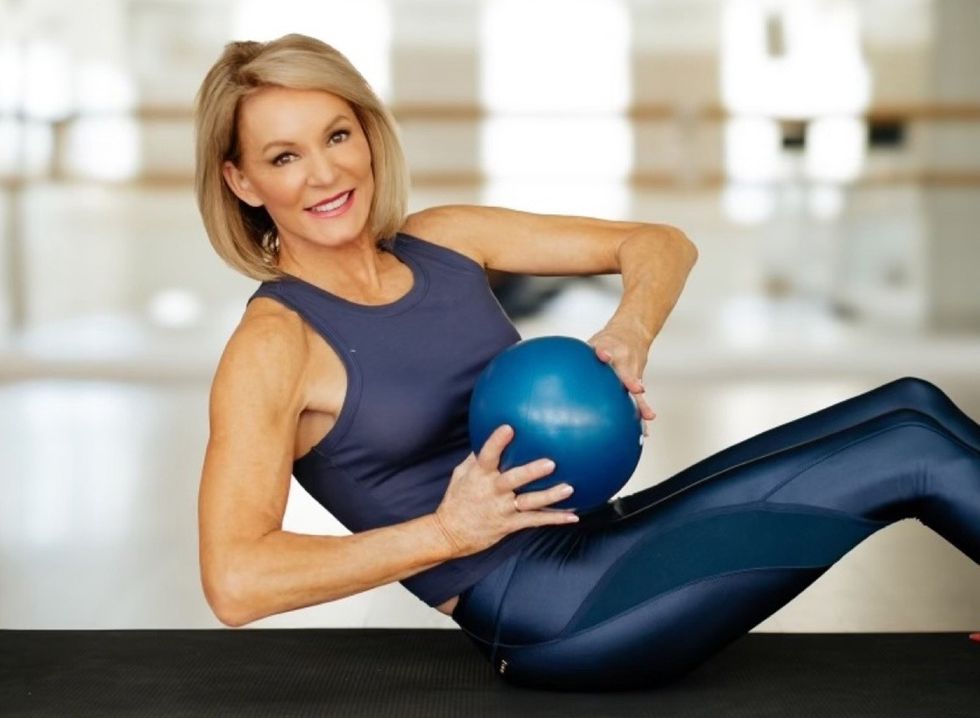 Liz Hilliard
Liz Hilliard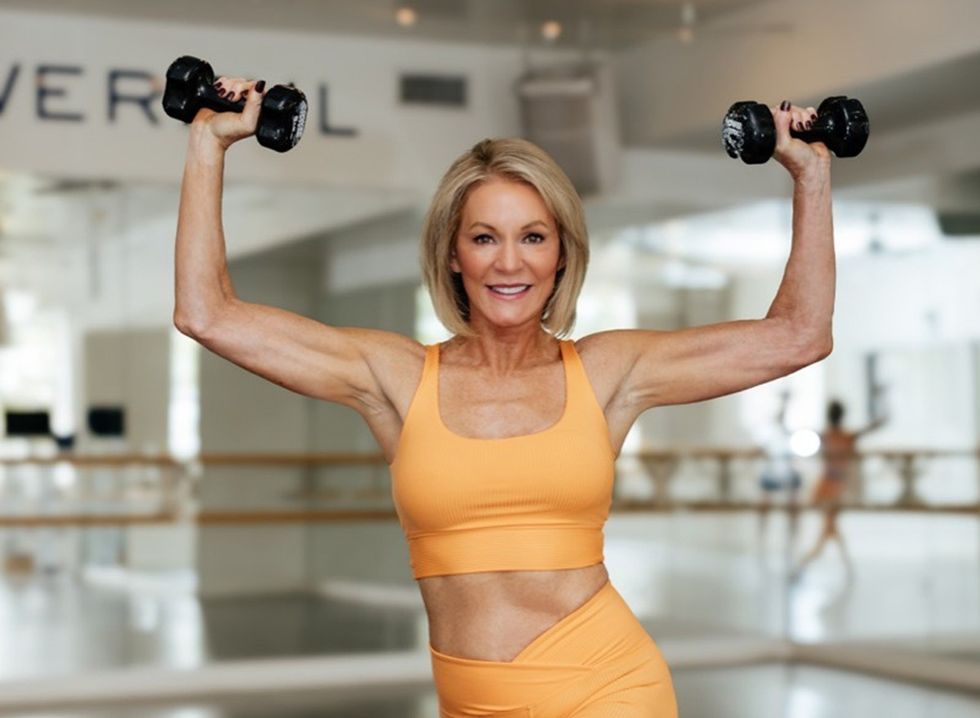 Liz Hilliard
Liz Hilliard Liz Hilliard
Liz Hilliard Shutterstock
Shutterstock Liz Hilliard
Liz Hilliard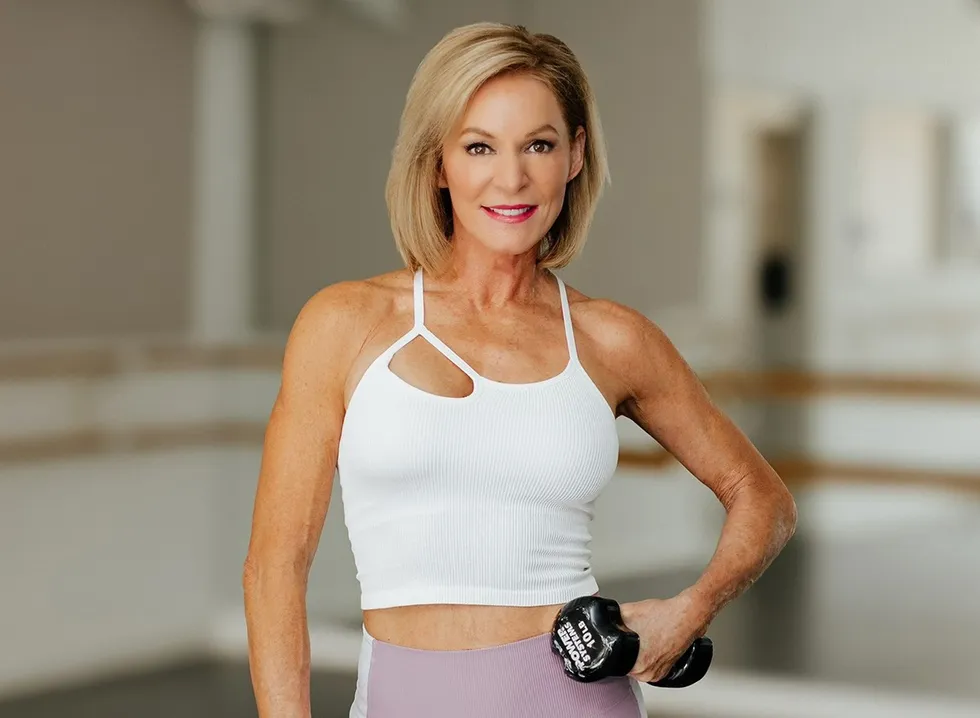 Liz Hilliard
Liz Hilliard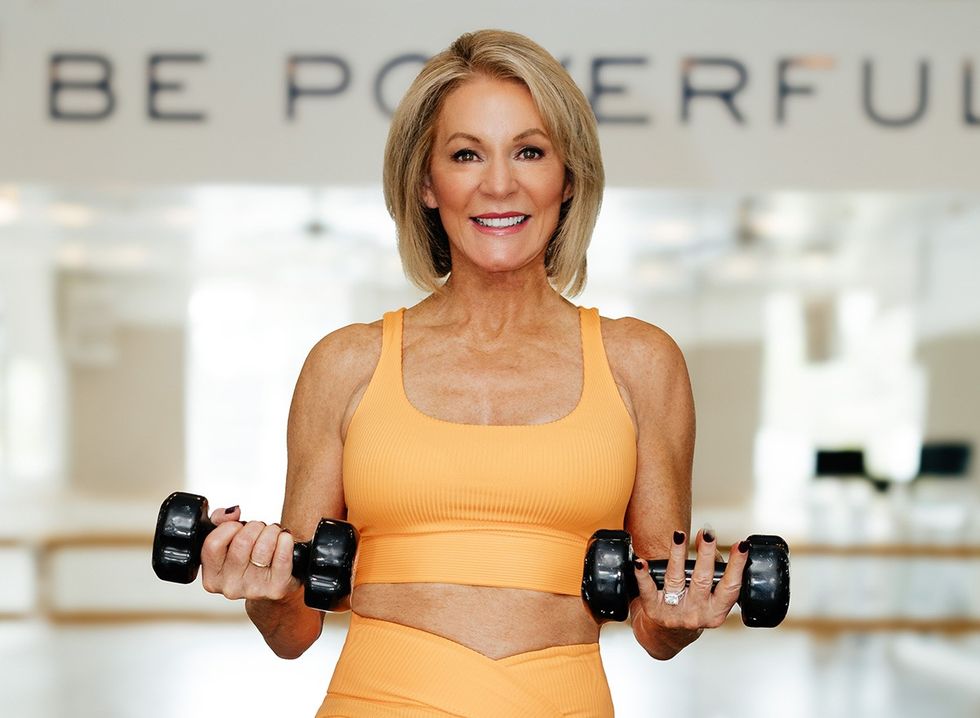 Liz Hilliard
Liz Hilliard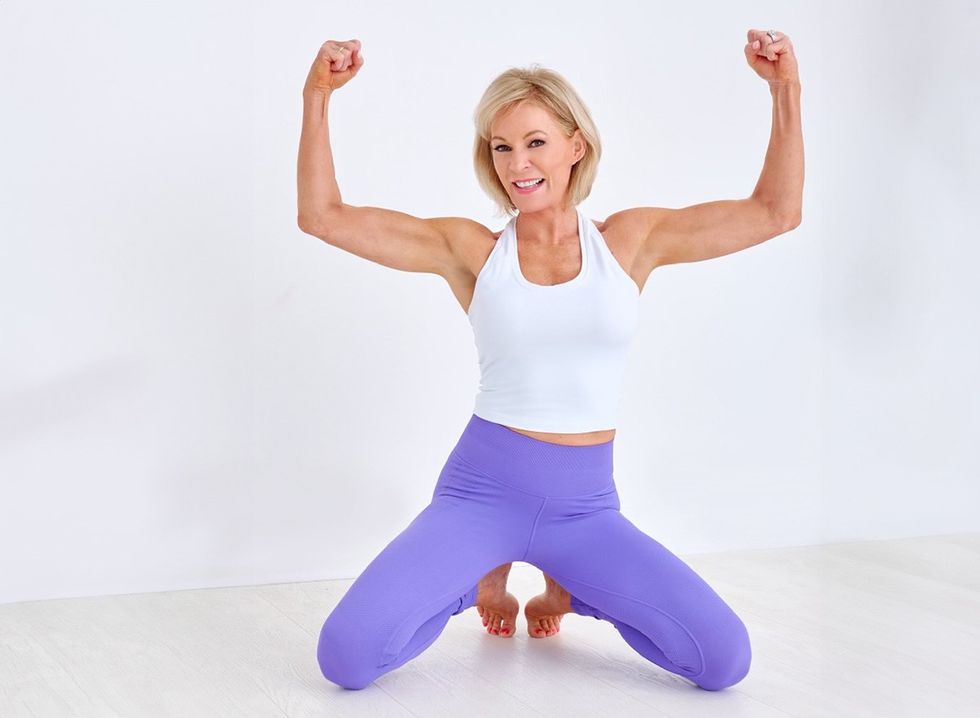 Liz Hilliard
Liz Hilliard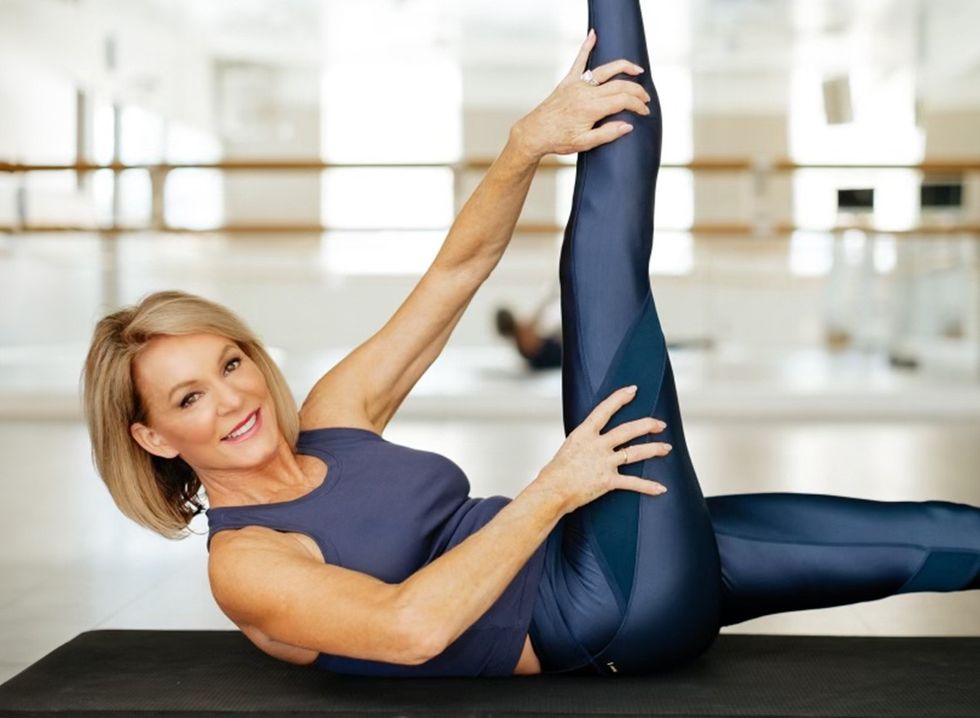 Liz Hilliard
Liz Hilliard Shutterstock
Shutterstock

 I'm a Nutritionist and These 9 High-Protein Snacks Keep My Clients Full While Losing 50 Pounds
I'm a Nutritionist and These 9 High-Protein Snacks Keep My Clients Full While Losing 50 Pounds
 Shutterstock
Shutterstock 2. Processed FoodsShutterstock
2. Processed FoodsShutterstock Shutterstock
Shutterstock Shutterstock/Prostock-studio
Shutterstock/Prostock-studio Shutterstock
Shutterstock Pro TipsShutterstock
Pro TipsShutterstock Shutterstock
Shutterstock Shutterstock
Shutterstock Shutterstock
Shutterstock Shutterstock
Shutterstock Don’t Drink as Much AlcoholShutterstock
Don’t Drink as Much AlcoholShutterstock Most Women on GLP-1s Are Making a Few Common MistakesShutterstock
Most Women on GLP-1s Are Making a Few Common MistakesShutterstock Soda and Sugary DrinksShutterstock
Soda and Sugary DrinksShutterstock Shutterstock
Shutterstock Eat BreakfastShutterstock
Eat BreakfastShutterstock And Improve Insulin SensitivityShutterstock
And Improve Insulin SensitivityShutterstock Belly Flab Strip Tip: Sugar and Fat Calories Leave Its Mark on Your BodyShutterstock
Belly Flab Strip Tip: Sugar and Fat Calories Leave Its Mark on Your BodyShutterstock Shutterstock
Shutterstock The Drugs Mimic the GLP-1 Hormone Naturally Produced by the BodyShutterstock
The Drugs Mimic the GLP-1 Hormone Naturally Produced by the BodyShutterstock 3. Deep-Fried ItemsShutterstock
3. Deep-Fried ItemsShutterstock